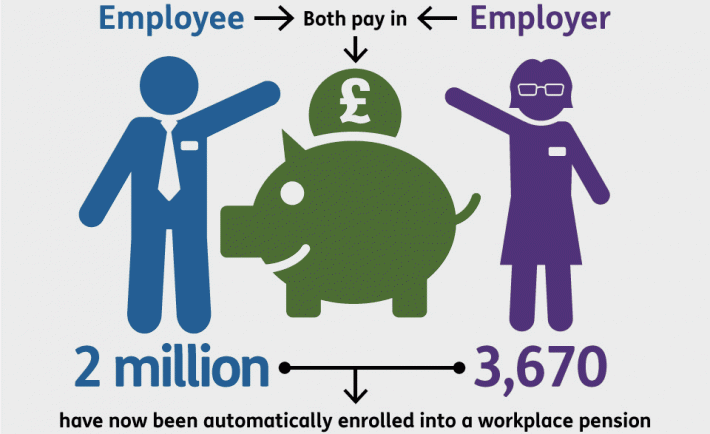
(This is for startups in the UK)
According to the Pensions Act of 2008, every business in the UK employing more than five people must auto-enroll all their employees into a pension scheme by 1st April 2017. Larger businesses have been steadily staged into this new scheme since 1st October 2012 but 1st April 2017 marks the last possible date for business with fewer than 30 yet more than five employees to get involved.
The thinking behind the scheme is to ensure that by retirement age, every UK worker will have enough money saved so that they do not rely on state pension alone. As with all pension schemes, employees can opt out of the scheme if they don’t wish to be involved, but the big difference now is that as an employer it is your responsibility to enroll them in the first place. With 1.5 million small companies due to stage up until 2018, many companies are asking how the scheme will impact their business.
Any member of staff with an annual gross income of over £10,000 and aged between 22 and the state pensions age is eligible for auto-enrollment. Under the Pensions Act, the minimum total amount that must be paid into each individual employee’s pension scheme is 8% of their gross earnings, 3% which must be paid by you, the employer, with the remaining 5% coming directly from the employee’s salary (something which your payroll will be responsible for deducting).
What are the positives and negatives?
One of the biggest issues so far with the new scheme is a lack of awareness. In fact according to recent statistics, 31% of employers still haven’t heard of automatic enrollment, and of the 69% that do know what it is, just 30% know when their staging date is. Will auto-enrollment be a good or bad thing for business, though? The same survey found that 26% of employers think it’s a good thing, 9% think it’s a bad thing and 65% are still unsure – and among the biggest concerns are how it could affect bonuses and pay rises.
One of the big positives will be staff motivation. Although many view the scheme as another burden on struggling businesses, many others believe it is providing an extra incentive for staff to remain, without the need for employers to increase salaries or offering other benefits like gym membership or health insurance.
One thing that might throw a spanner in the works, however, is the introduction of Lifetime ISAs which allow individuals between the ages of 18 to 40 to save up to £4,000 a year tax free. Such an attractive offer has raised concerns that young savers might choose to opt out of auto-enrollment and invest in a Lifetime ISA instead.
So what do I need to do as an employer?
The first thing employers need to do is to choose, setup and register a scheme, which might require the help of a financial adviser. Some schemes might be more expensive and are more limited in investment options, so it’s important that you take the time to choose which scheme is right for you and your staff. As the deadline approaches, it goes without saying that demand is going to rise hugely, so it makes sense to get your employees enrolled as soon as possible.
The next step is to ensure that all your eligible employees are auto-enrolled, as well as any new employees who also meet the criteria. You should also give employees who do not automatically qualify for auto-enrollment the options to sign up, too. It’s also really important to budget for the next few years ahead and be aware of any changes to National Insurance payments and any tax implications.
About the Author: Andy Hyland has been a qualified accountant for fifteen years and is the owner and director of AK Tax, an accountancy and tax advisory firm based in Medway, Kent. He has spent much of his professional career advising small business owners and has written extensively on finance related subjects. You can connect with Andy on Twitter, Facebook and LinkedIn.




